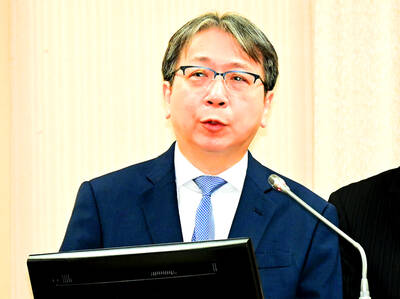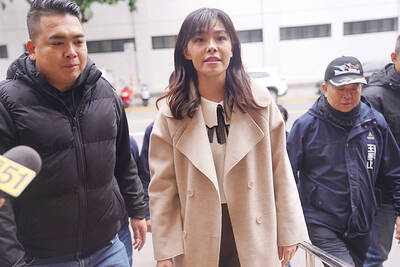Taipei has beaten New York, Paris and London in an online survey to become the world’s No. 6 spot to spend this New Year’s Eve, a survey by Agoda.com showed.
The survey results released by Agoda.com — one of Asia’s leading hotel booking sites — on Dec. 17 showed that Taipei garnered 7.94 percent of votes from more than 7,000 respondents to the poll, beating New York (seventh, 7.26 percent), Paris (eighth, 5.35 percent), London (ninth, 4.11 percent) and Sydney (10th, 3.9 percent).
Taipei drew more than 1 million visitors during its New Year’s Eve festivities last year, with the largest number of overseas travelers visiting from Malaysia, China, Singapore and Hong Kong.
Of the 24 global destinations, Bangkok was ranked as the most popular place to spend the holiday, earning 13.6 percent of the votes.
Hong Kong was second with 10.77 percent, followed by Bali (10.62 percent), Tokyo (9.45 percent) and Singapore (7.97 percent).
In contrast with 18 percent of respondents who chose friends as who they preferred to share New Year’s Eve with, 78 percent chose their family.
Most respondents said they preferred low-key celebrations to big parties, the survey found.
Just 27 percent of those surveyed said that they wanted to welcome the new year at a massive public event, such as Times Square’s ball drop, or the Taipei 101 countdown and fireworks show.
Taipei is set to see in 2015 with a nearly four-minute-long fireworks display during a show that blends Eastern and Western elements.
A total of 23,000 rounds of fireworks are to be lit at Taipei 101 at midnight on Thursday, according to Taipei Financial Center Corp (台北金融大樓公司), which operates the landmark.
Entitled “2015 iSee Taiwan” (iSee sounds like ai xi (愛惜), the Mandarin word for “cherish”), the show this year highlights healing, innovation and festivity, Taipei Financial Center spokesman Michael Liu (劉家豪) said.
In addition to colorful geometric figures, the display is to feature fan-like shapes that symbolize harmony in the East, Liu said.
He said the most difficult aspect of the fireworks display to design for this year’s show was one that circles the building and looks as if it is dancing.
The fireworks display is to be accompanied by Vivaldi’s The Four Seasons violin concertos combined with Taiwanese folk songs.
Aboriginal chants are also to be included, symbolizing racial and cultural harmony, serving as a prayer for the nation, Taipei Financial Center said.
The NT$38 million (US$1.19 million) show was designed by France’s Groupe F.

The US government has signed defense cooperation agreements with Japan and the Philippines to boost the deterrence capabilities of countries in the first island chain, a report by the National Security Bureau (NSB) showed. The main countries on the first island chain include the two nations and Taiwan. The bureau is to present the report at a meeting of the legislature’s Foreign Affairs and National Defense Committee tomorrow. The US military has deployed Typhon missile systems to Japan’s Yamaguchi Prefecture and Zambales province in the Philippines during their joint military exercises. It has also installed NMESIS anti-ship systems in Japan’s Okinawa

‘WIN-WIN’: The Philippines, and central and eastern European countries are important potential drone cooperation partners, Minister of Foreign Affairs Lin Chia-lung said Minister of Foreign Affairs Lin Chia-lung (林佳龍) in an interview published yesterday confirmed that there are joint ventures between Taiwan and Poland in the drone industry. Lin made the remark in an exclusive interview with the Chinese-language Liberty Times (the Taipei Times’ sister paper). The government-backed Taiwan Excellence Drone International Business Opportunities Alliance and the Polish Chamber of Unmanned Systems on Wednesday last week signed a memorandum of understanding in Poland to develop a “non-China” supply chain for drones and work together on key technologies. Asked if Taiwan prioritized Poland among central and eastern European countries in drone collaboration, Lin

ON ALERT: Taiwan’s partners would issue warnings if China attempted to use Interpol to target Taiwanese, and the global body has mechanisms to prevent it, an official said China has stationed two to four people specializing in Taiwan affairs at its embassies in several democratic countries to monitor and harass Taiwanese, actions that the host nations would not tolerate, National Security Bureau (NSB) Director-General Tsai Ming-yen (蔡明彥) said yesterday. Tsai made the comments at a meeting of the legislature’s Foreign Affairs and National Defense Committee, which asked him and Minister of National Defense Wellington Koo (顧立雄) to report on potential conflicts in the Taiwan Strait and military preparedness. Democratic Progressive Party (DPP) Legislator Michelle Lin (林楚茵) expressed concern that Beijing has posted personnel from China’s Taiwan Affairs Office to its

BACK TO WORK? Prosecutors said they are considering filing an appeal, while the Hsinchu City Government said it has applied for Ann Kao’s reinstatement as mayor The High Court yesterday found suspended Hsinchu mayor Ann Kao (高虹安) not guilty of embezzling assistant fees, reducing her sentence to six months in prison commutable to a fine from seven years and four months. The verdict acquitted Kao of the corruption charge, but found her guilty of causing a public official to commit document forgery. The High Prosecutors’ Office said it is reviewing the ruling and considering whether to file an appeal. The Taipei District Court in July last year sentenced Kao to seven years and four months in prison, along with a four-year deprivation of civil rights, for contravening the Anti-Corruption